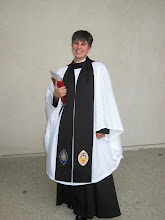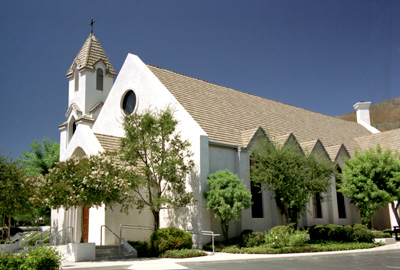 This past Sunday, our gospel lesson and our reading from Isaiah both dealt with rocks of one kind or another. In Isaiah, it was the rock from which Israel was hewn, and, in the gospel, it was Jesus naming Peter the rock upon which the church would be founded.
This past Sunday, our gospel lesson and our reading from Isaiah both dealt with rocks of one kind or another. In Isaiah, it was the rock from which Israel was hewn, and, in the gospel, it was Jesus naming Peter the rock upon which the church would be founded. Rocks are often associated with the sacred in one way or another, and in the photo to the right, the cairn (a fancy name for a cone-shaped pile of rocks) marks the end of the medieval Celtic Christian pilgrimage route to Bardsey Island, home of 1,000 Saints.
In my sermon I mentioned the treacherous crossing to Bardsey which you can see in the photo.
 Look for the current (the change of color in the water) and this photo was taken on a day when the sea was like glass!
Look for the current (the change of color in the water) and this photo was taken on a day when the sea was like glass!The photo on the right is of the steps that lead down to St. Mary's Well, the last stop for pilgrims before crossing to Bardsey. These are the steps hewn in the 6th century by pilgrims and made smooth over the 1500 years of people making their way to the well. It's not a great photo, but it does give a sense of how steep and rocky that cliff face is. (At top is my friend and hiking companion, Isabella).






